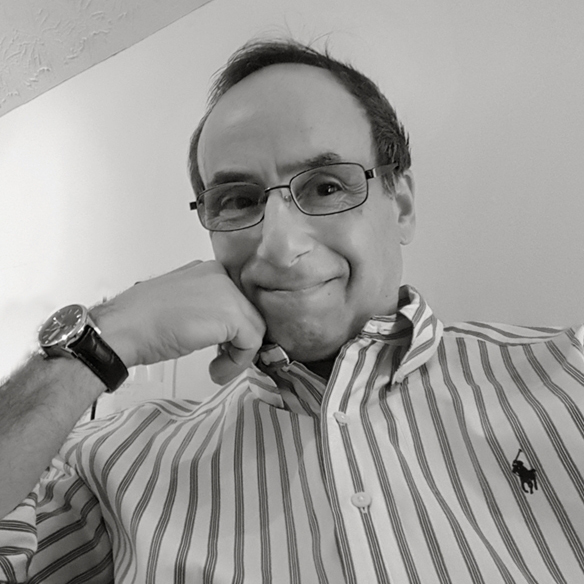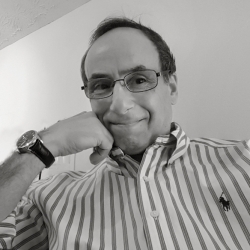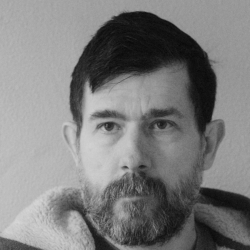Home > Topics > The Art of Photography > Styles & Looks > Creativity through the The Art of Seeing
Creativity through the The Art of Seeing
-
AuthorTopic: Creativity through the The Art of Seeing Read 1532 Times
-
Styles & Lookson: July 15, 2019 at 10:43 pm
“Photographers must learn not to be ashamed to have their photographs look like photographs.” – Alfred Stieglitz
I wanted to start off with this quote from Alfred Stieglitz, because – in my opinion – the past several years has seen an increasing number of both professional and amateur photographers scrambling to outdo the other with a certain “look”, as it were, which has been progressively moving away from the attributes that one normally associates with a photograph. Now, wait, hang on – I am not finished: yes, impressionistic like compositions, macro, abstract, are all accepted and cherished “styles” or genres in photography, but what I speaking of is the over-use of one style over and over – where, frankly, 300 photos look like they were captured by the same person, camera and lens. Stieglitz, made this statement when in darkroom manipulation was being practiced as a way for photographers to show, they were ‘creating art’. Though Stieglitz himself used some types of manipulation he was adamant about how this was achieved: ‘Stieglitz advocated an emphasis on the craftsmanship involved in photography. Most members of the group made extensive use of elaborate, labor-intensive techniques that underscored the role of the photographer’s hand in making photographic prints.’
I feel photographers today have similar concerns on what constitutes creative art, as a consequence, over using digital photography software in an attempt to differentiate themselves from the next photographic artist. I suggest we take a step backwards and reinvigorate our creativity from behind the lens.
It is accepted, one of many ways to learn or develop a style is to review other photographic work (and paintings, too). Along with these countless examples, using the art of visualization can help to develop your own “look” or style. The art of “seeing” lies in our ability to slow down, step back and retrace our steps: elaborating on the old trope, “Stop and smell the roses”, be cognizant of your surroundings by slowing down to experience the sensations that infiltrate our space we do not notice in our hurried pace. To experiencing more from our environment, open all your senses to see, hear, smell and taste a wider sampling: stoop low and see what the insects see, or pull back and glee at the grandeur of a majestic landscape. With a stronger awareness of the world around us, then helps expose the hidden nuances in helping to create dynamic compositions“. L. A. Lewin
Ladies, Gents, let talk about this: love to hear comments about your experience using visualization, who wants to learn more and perhaps those who have alternative ways of developing creativity and developing photographic styles. Thank you, everyone.
Lance A. Lewin
-
This topic was modified 5 years ago by
 Lance Lewin.
Lance Lewin.
Re: Creativity through the The Art of SeeingReply #1 on: July 22, 2019 at 9:45 amSadakichi Hartmann is more or less recognized as kicking this thing off in 1904, with this essay:
which took a while to gain traction. Stieglitz didn’t start to come around for a few years (your quote seems to date from 1913, which is more or less the beginning, I think, of Stieglitz conversion).
Hartmann made a number of excellent points which stand equally well today.
The problem then, as now, is that photographers aspiring to be artists have a hard time with the notion that the artistic work is done at the press of a button. Is that all? Surely there is something more? Some simply love the processes of modifying photographs, the stitching and cloning and fiddling around with layers which, inarguably, can be pretty fun. Photographers, after all, mostly arrive with a degree of comfort with, if not an outright affection for, fiddling about with technical gubbins of this sort or the other.
And, to be fair, the results are sometimes quite wonderful. I am certainly not going to say that it’s not Art if you clone out something. I am not even going to say that it’s not Photography. But things are different when you start to take a heavy hand with manipulation.
You begin to blend two things: the act of selection, the underlying action that makes photography what it is; and something else that is kind of like painting, or drawing, or sculpture, something that is a “making” rather than a “choosing.”
Mike Johnston at ToP tried to suggest that maybe we could use different words for these things, and got, um, some blowback. I don’t care much about what words we use, but we should recognize that they are different things, albeit perhaps not clearly separated by a hard delineation. The errors of the Pictorialist era, and they were real errors, are being repeated today. I rather like a lot of Pictorialist work, myself, but that path was not without its problems. It would behoove us to stay aware of what those problems were.
If nothing else, the fury with which this claim is repudiated should indicate something.
Re: Creativity through the The Art of SeeingReply #2 on: July 25, 2019 at 7:50 amImportant points, indeed, Andrew.
‘the act of selection‘ is in fact how the photographer creates from behind the lens. They can be viewed in a similar light. This is clearly the intent and function of visualization. In addition, as photographers we have the ability to naturally select, eliminate, but not rearrange. (footnote-1) Other art genres are able to participate in all three functions, which is why photography can be viewed as one of the hardest forms of art to achieve great success. Digital Art brings this third and surely one must admit, important function for creativity. Moving forward.
During a recent Digital Photography Opening in Atlanta I was happy to hear the guest curator announce (allow me to paraphrase) ‘the pictures presented here are in fact, digital creations, and less about fine art photography‘, in front of 100 guests. It was a breath of fresh air to hear him state this, especially since on a few occasions I suggested to participants in his digital photography critique group, they look to improve photography techniques from behind the lens as opposed to the relentless pursuit in turning to post-production for almost (all) their corrective solutions. Every piece presented on the walls of this museum were created (primarily) in post-production, including cloning, multiple exposures, and composites, with many a constitute of all these digital software manipulations. The work presented was the best I have seen – and one may suggest the commercial value they represented was priceless!
Let me be clear, both digital fine art and fine art photography are equals as representatives of Fine Art: the final piece of art is an individual achievement and should be appreciated for its bold statement presented through the artists visual virtuosity regardless of the genre and the methods used to achieve it. However, the current trends in photography are not blurring the lines, but are melting the lines between what constitutes digital fine art and fine art photography. There is obviously a lot more to discuss here, and I look forward to hearing feedback from all corners.
LAL
Footnote 1 The Art of Photography by Irina Khrabroff – 1927
Lance A. Lewin
-
This reply was modified 5 years ago by
 Lance Lewin.
Lance Lewin.
Re: Creativity through the The Art of SeeingReply #3 on: September 12, 2019 at 4:25 pmCame across this video and it reminded me of this thread. Don’t be dissuaded by the title:
NOBODY CARES ABOUT YOUR PHOTOGRAPHYMike.
_____
Mike Nelson Pedde
Victoria, BC
https://www.wolfnowl.com/Re: Creativity through the The Art of SeeingReply #4 on: September 12, 2019 at 7:23 pmHey, Mike thanks for sharing: yes, if we listen to what Ted Forbes says about the billions of posted images that inundate our space daily – then he is correct – for the most part – a lot of people – actually, the majority of people on FB, Instagram, and other visual media (social) platforms, really do not care about “your work” as much as you hope they would. On the other hand, he suggests, ‘work must mean something to gain notoriety’, or in so many words. This last statement takes us to what I am speaking about in my post “Creativity through the Art of Seeing”.
My advocacy is focused on the survival of “photography”, as a specific art form.Just like the Sculpture, Painter, the Potter, or Glass-Smith are specific forms of art, and that rely on a certain combination of skill-sets to accomplish a finished piece of fine art, photography is too. What we are witnessing is the slow decay of the “art of Photography” as a single-form artistic entity. Digital embellishments onto digital photography image files (and including scanned film negatives) are endangering photography as a recognized art form – in its purest sense. And one of the main culprits in this “change” is the lack of properly categorizing fine art photography.
“And as “individual expression” in straight photography is extremely difficult to attain, the artistic photographer began to imitate the artist”. Sadakichi Hartmann (Turn of Century art critic) 1904. Hartmann continued, “It became the fashion to blur objects, and the so-called “cult of the spoilt print” set in. The results were often far from being satisfactory, largely because the majority of the workers could boast of no art training, and had no skill in the handling of brush and etching tools”. 1904 These excerpts are from a 1904 article after Hartmann viewed a photography exhibition at the Art Galleries of the Carnegie Institute, Pittsburgh, Pa in 1904.
Please, I am only submitting these (seemingly modern-day) turn-of-the-century remarks on the Art of Photography, as they are similar in scope to what I speak about: his words “plea” that photography keep to its roots as more and more artists began trying to embellish other art forms onto film negatives or print, and the use of certain developing techniques that created bold statements onto otherwise “straight” photographs. Similarly, the digital revolution has threatened the very nature of a “straight” photograph (and of course I mean this in relative terms, as almost every photograph or image file is manipulated to some extent) to the extent a lot of new “students of photography” are not being given the chance to create primarily from behind the lens – and instead are leapfrogged into the digital darkroom to find almost all their creative perspectives and fixes. And yes, I see this on almost a daily basis with critique groups I either run, or participate in. The feedback from mostly 50+ year old students is an eyeopener, indeed.
A Memorial for all those who lost their lives on the most horrific of days – never forget the suffering: Kennesaw State Park, Georgia 2003
“Souls of 9/11” – original negative captured in 2003. Minolta XD-11 film camera; color film ISO-200; tripod: my wife assisted by triggering the shutter cord upon my order, as I walked between the (blowing) flags and shot off several Bursts from my Flash. (Timed Exposure between 25 and 40 seconds) Post-production was to correct color-cast from the local street lamps. Cropped through the viewfinder.
Thank you, everyone!
Lance A. Lewin
-
This reply was modified 4 years, 10 months ago by
 Lance Lewin.
Lance Lewin.
-
This reply was modified 4 years, 10 months ago by
 Lance Lewin.
Lance Lewin.
-
This reply was modified 4 years, 10 months ago by
 Lance Lewin.
Lance Lewin.
Re: Creativity through the The Art of SeeingReply #5 on: September 13, 2019 at 7:20 pmI think a big part of your difficulty is that photography is not and never has been a “single-form artistic entity.”
I am, personally, a dedicated proponent of straight photography, more strident and less successful than Hartmann. It’s possible those two differences are related. Still, unlike Hartmann, I do not seek or advocate particularly for any single path. The “spoilt prints” now dubbed Pictorialism, of Hartmann’s day are with us, and have always been with us, and some of the truly great photographic art that has been made falls in to that camp.
My concern for photography is not that it is manipulated, altered, false, but rather that people will begin to treat all photography as if it were. At present, I run rather hot and cold on this point. Certainly people are cynical, and if the photograph appears suspect, or if it fails to align with some political belief, accusations of ‘Photoshop!’ will fly.
But, apart from that, people tend to treat photographs as always, as the limited but definite representations of truth that they have always been. This is from where photography derives its unique power, and if disturbed, if that social contract fails, then we have trouble.
My concern now lies not with Photoshop which requires some effort (and therefore most photos are “true” in the relevant sense) but with contemporary “AI” methods, which radically modify pictures with no effort whatever. This is certainly the next assault on the aforementioned social contract.
I suppose it is inevitable. If “AI” does not destroy that contract, something else will.
-
This topic was modified 5 years ago by
-
AuthorPosts
- You must be logged in to reply to this topic.



